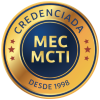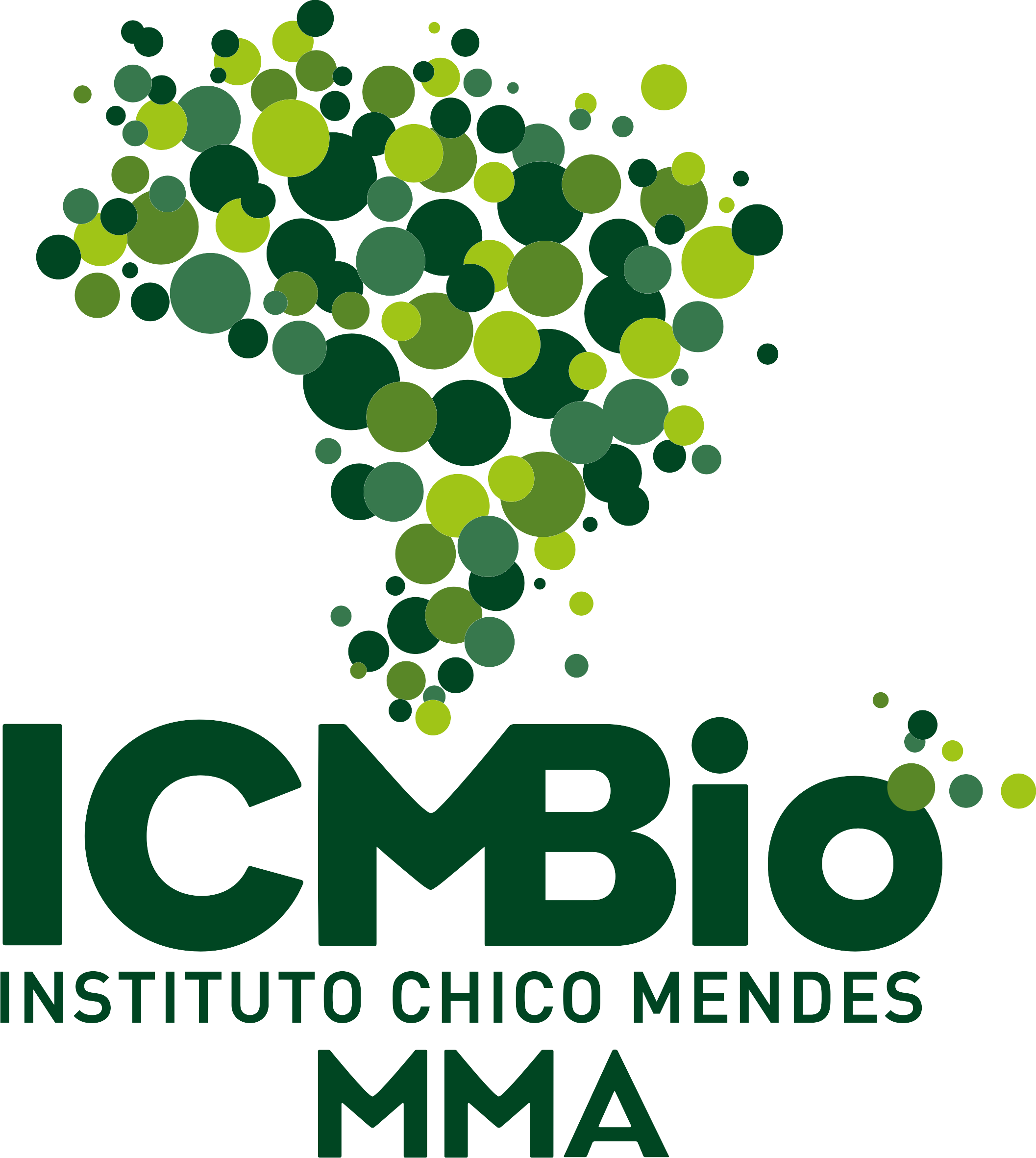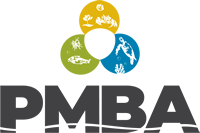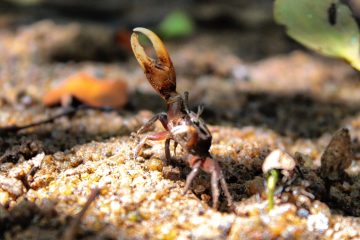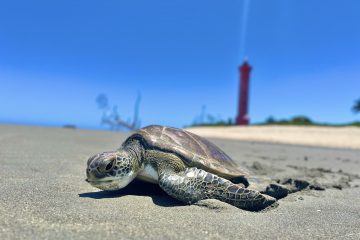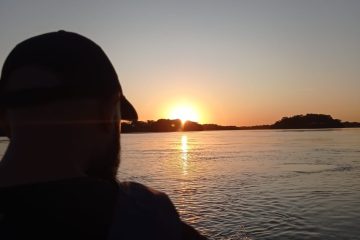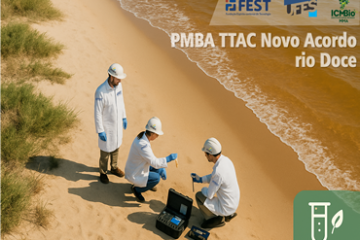PMBA novo acordo do rio doce
Programa de Monitoramento da Biodiversidade Aquática da Área Ambiental l – Porção Capixaba do Rio Doce e Região Marinha e Costeira Adjacente
Após o rompimento da barragem de Fundão, em Mariana/MG, ocorrido em novembro de 2015, foi firmado em março de 2016 o Termo de Transação e de Ajustamento de Conduta (TTAC). Esse acordo – estabelecido entre os governos federal e estaduais, órgãos públicos e as empresas responsáveis pelo desastre (Samarco, Vale e BHP) – teve como objetivo assegurar a reparação integral dos danos socioambientais e socioeconômicos decorrentes do rompimento.
Para viabilizar a governança do TTAC, foi instituído em abril de 2016 o Comitê Interfederativo (CIF), formado por representantes dos governos federal e dos estados de Minas Gerais e Espírito Santo, além de órgãos ambientais como IBAMA, ICMBio, IEMA e IEF, agências reguladoras, Ministério Público e Defensorias Públicas. O CIF atuou como instância central de deliberação do acordo, organizando-se em 11 Câmaras Técnicas (CTs) temáticas. Entre elas, a Câmara Técnica de Biodiversidade (CT-Bio/CIF), responsável por orientar as ações voltadas à conservação e recuperação da biodiversidade afetada pelo desastre.
Entre os compromissos do TTAC, a Cláusula 165 previa o monitoramento da biodiversidade aquática na foz do rio Doce e nos ambientes estuarinos e marinhos impactados. Para atender a essa cláusula, a CT-Bio/CIF elaborou o Termo de Referência nº 04/2016 (TR4), com diretrizes para a criação do Programa de Monitoramento da Biodiversidade Aquática da área ambiental I – porção capixaba do rio Doce e região marinha e costeira adjacente (PMBA).
O TR4 foi aprovado pela CT-Bio em outubro de 2016, e sua versão final foi aprovada pelo CIF em 27 de junho de 2017, por meio da Deliberação nº 79. Após mais de um ano de tratativas e mobilização, o Programa começou a ser executado em setembro de 2018, por meio de um Acordo de Cooperação Técnico-Científica e Financeira (ACT) entre Fundação Renova (FR) (instituída em agosto de 2016 através do TTAC, com a missão de implementar e gerir os programas de reparação, restauração e reconstrução das regiões impactadas pelo rompimento da barragem de Fundão) e Fundação Espírito-Santense de Tecnologia (Fest), assinado em julho de 2018, tendo a Universidade Federal do Espírito Santo (UFES) como anuente. A FEST/UFES executou diversas áreas relacionadas à implementação do PMBA realizada em rede com outras Instituições Federais de Ensino Superior – IFES e Instituições de Ciência e Tecnologia – ICT´s, inicialmente nomeada de Rede Rio Doce Mar (RRDM).
Desde então, a FEST/UFES e a rede de universidades vinculadas passaram a entregar relatórios periódicos à Fundação Renova, que eram então avaliados pela CT-Bio em notas técnicas deliberadas pelo CIF. O primeiro relatório semestral foi entregue em maio de 2019 e o primeiro relatório anual, em novembro do mesmo ano.
01 - 1º Relatório Semestral de Evolução do PMBA - Junho 2019
02 - 1º Relatório Anual do PMBA - Novembro 2019
03 - 2º Relatório Semestral de Evolução do PMBA - Agosto 2020
04 - 2º Relatório Anual do PMBA - Dezembro 2020
05 - 3º Relatório Semestral de Evolução do PMBA - Setembro 2021
06 - 3º Relatório Anual do PMBA - Fevereiro 2022
07 - 4º Relatório Semestral de Evolução do PMBA - Janeiro 2023
08 - 4º Relatório Anual do PMBA - Junho 2023
- 01-08-Relatorios-Tecnicos.zip
- 02-08-Nota-Tecnica-e-Deliberacao.zip
- SEI_ICMBio-17961201-Informacao-Tecnica_-Analise-referente-ao-extremo-sul-da-Bahia_-4o-Relatorio-Anual-PMBA.zip
- 03 - 08 Material Suplementar - temas .zip
- 03 - 08 - Material Suplementar - Shapefiles - ambiente costeiro.zip
- 03 - 08 - Material Suplementar - Shapefiles - malha amostral.zip
- 03 - 08 - Material Suplementar - Shapefiles - corpo principal do relatorio.zip
- 03 - 08 - Material Suplementar - Shapefiles - ambiente marinho.zip
- 03 - 08 - Material Suplementar - Shapefiles - ambiente dulcicola.zip
09 - 5º Relatório Semestral de Evolução do PMBA -Novembro 2023
- 01-09-Relatorios-Tecnicos.zip
- 02 - 09 - Material suplementar - temas .zip
- 02 - 09 - Material Suplementar - Shapefiles - Malha Amostral.zip
- 02 - 09 - Material Suplementar - Shapefiles - Ambiente Marinho.zip
- 02 - 09 - Material Suplementar - Shapefiles - Corpo Principal do Relatório.zip
- 02 - 09 - Material Suplementar - Shapefiles - Ambiente Dulcícola.zip
- 02 - 09 - Material Suplementar - Shapefiles - ambiente costeiro.zip
10 - 5º Relatório Anual do PMBA - Junho 2024
- 01-10-Relatorios-Tecnicos.zip
- 02 - 10 - Material Suplementar - temas.zip
- 02 - 10 - Material Suplementar - Shapefiles - Sintese Integrativa.zip
- 02 - 10 - Material Suplementar - Shapefiles - Corpo Principal do Relatório.zip
- 02 - 10 - Material Suplementar - Shapefiles - Ambiente Marinho.zip
- 02 - 10 - Material Suplementar - Shapefiles - Malha Amostral.zip
- 02 - 10 - Material Suplementar - Shapefiles - Ambiente Costeiro.zip
- 02 - 10 - Material Suplementar - Shapefiles - Ambiente Dulcícola.zip
11 - 6º Relatório Anual do PMBA - Março 2025
- 11-01-Relatorios-Tecnicos.zip
- 11-02-Material-Suplementar-Shapefiles-parte-1.zip
- 11-02-Material-Suplementar-Shapefiles-parte-2.zip
- 11-02-Material-Suplementar-Shapefiles-parte-3.zip
- 11-02-Material-Suplementar-Shapefiles-parte-4.zip
- 11-02-Material-Suplementar-Shapefiles-parte-5.zip
- 11-02-Material-Suplementar-Shapefiles-parte-6_2.zip
Íntegra do Novo Acordo Judicial
Artigos com dados pré PMBA
- Sá et al., 2021. Time-sequence development of metal(loid)s following the 2015 dam failure in the Doce river estuary, Brazil. SCIENCE OF THE TOTAL ENVIRONMENT, v. 769, p. 144532, 2021.
- Costa et al., 2021. Iron ore tailings as a source of nutrients to the coastal zone. MARINE POLLUTION BULLETIN, v. 171, p. 112725.
- Quaresma et al., 2021. The impact of trace metals in marine sediments after a tailing dam failure: the Fundão dam case (Brazil). Environmental Earth Sciences, v. 80, p. 571.
- Longhini et al., 2021. Environmental quality assessment in a marine coastal area impacted by mining tailing using a geochemical multi-index and physical approach. SCIENCE OF THE TOTAL ENVIRONMENT, v. 803, p. 149883, 2021.
- Fernandes et al., 2020. Marine zooplankton dynamics after a major mining dam rupture in the Doce River, southeastern Brazil: Rapid response to a changing environment. SCIENCE OF THE TOTAL ENVIRONMENT, v. 736, p. 139621.
- Longhini et al., 2020. Coastal waters contamination by mining tailings: What triggers the stability of iron in the dissolved and soluble fractions?. LIMNOLOGY AND OCEANOGRAPHY, v. 9999, p. 10.1002/lno.115.
- Bonecker et al., 2019. Larval fish assemblages of the coastal area affected by the tailings of the collapsed dam in southeast Brazil. REGIONAL STUDIES IN MARINE SCIENCE, v. 32, p. 100848.
- Dal Pizzol et al., 2022. Metal accumulation induces oxidative stress and alters carbonic anhydrase activity in corals and symbionts from the largest reef complex in the South Atlantic ocean. Chemosphere, 290, 133216.
- Carmo et al., 2020. Radiometric signature as an indicator of radiological pollution on Rio Doce after the disaster in tailings dam. JOURNAL OF RADIOANALYTICAL AND NUCLEAR CHEMISTRY, v. 1, p. 1-7.
- Valeriano et al., 2019. Sm-Nd and Sr isotope fingerprinting of iron mining tailing deposits spilled from the failed SAMARCO Fundão dam 2015 accident at Mariana, SE-Brazil.
- Quaresma et al. 2020. The effects of a tailing dam failure on the sedimentation of the eastern Brazilian inner shelf. Continental Shelf Research, v. 205, p. 104172.
- Aguiar et al., 2020. Bioavailability and ecological risks of trace metals in bottom sediments from Doce river continental shelf before and after the biggest environmental disaster in Brazil: The collapse of the Fundão dam. journal of environmental management, v. 272, p. 111086.
- Grilo et al., 2020. The role of charge reversal of iron ore tailing sludge on the flocculation tendency of sediments in marine environment. Applied Geochemistry, v. 117, p. 104606.
- Grilo et al., 2018. Changes in Flocculation Patterns of Cohesive Sediments After an Iron Ore Mining Dam Failure. Marine Geology, v. 400, p. 1-11.
- Andrades et al., 2020. Early evidences of niche shifts in estuarine fishes following one of the world's largest mining dam disasters. MARINE POLLUTION BULLETIN, v. 154, p. 111073.
- Insights on Demography and evolutionary history of the South west Atlantic loggerhead turtles
- A high-resolution mitochondrial DNA sequencing assessment of genetic structure and Atlantic-wide connectivity in Ascension Island green turtles
- Evidence of polyandry and polygyny in loggerhead sea turtle from Southwest Atlantic
- Thermohaline and water masses distributions over the continental shelf off the Doce River (19.65°S), Southeastern Brazil
Aves
- Analysis of free-living seabirds from Brazil as potential hosts of Toxoplasma gondii and serological investigation for antibodies against Leptospira spp.
- Gadfly petrels of the Pterodroma feae‑complex in southwestern
- Gadfly petrels of the Pterodroma feae-complex in southwestern Atlantic Ocean
- Concentrations of organic pollutants in seabirds from the tropical southwestern Atlantic Ocean are explained by differences in foraging ecology
- Metal tolerance in enterococci isolated from seabirds in Abrolhos Archipelago, Brazil: evaluating their role as bioindicators of marine pollution
- Ecological trap for seabirds due to the contamination caused by the Fundão dam collapse, Brazil
- Resource partitioning influences levels of toxic trace elements in sympatric tropical seabirds
- Records of Ixodes percavatus sensu lato on Atlantic yellow-nosed albatrosses (Thalassarche chlororhynchos) on the Brazilian coast and offshore waters
Bacia Integração
Bentos de Fundo Inconsolidado
Cetáceos
- Temporal trends of trace elements bioaccumulation by a vulnerable cetacean (Pontoporia blainvillei) before and after one of the largest mining disasters worldwide
- Franciscana dolphins, Pontoporia blainvillei, as environmental sentinels of the world's largest mining disaster: Temporal trends for organohalogen compounds and their consequences for an endangered population
- The legacy and future of multiple anthropogenic stressors: Organohalogen compounds in the vulnerable Guiana dolphin (Sotalia guianensis)
Conselho Técnico
Dronemonitoramento
Ecotoxicologia
- Avian blood and feathers as biological tools to track impacts from the biggest environmental disaster in Brazilian history: insights from bioaccumulation data
- THE INFLUENCE OF DOCE RIVER MOUTH ON THE MICROBIOME OF NEARSHORE COASTAL AREAS THREE YEARS AFTER THE FUNDÃO DAM RUPTURE, BRAZIL.
- Resource partitioning influences levels of toxic trace elements in sympatric tropical seabirds
- A six-year ecotoxicological assessment of the Doce river and coastal marine areas impacted by the Fundão tailings dam failure, Brazil
- The microbial profile of rivers and lagoons three years after the impact of the world's largest mining disaster (Fundão dam, Brazil)
- Temporal changes in metal and arsenic concentrations in blood and feathers of tropical seabirds after one of the largest environmental disasters associated with mining
- Biochemical response and metals bioaccumulation in planktonic communities from marine areas impacted by the Fundão mine dam rupture (southeast Brazil)
- Avian blood and feathers as biological tools to track impacts from trace-metals: Bioaccumulation data from the biggest environmental disaster in Brazilian history
- Temporal and spatial variations in metals and arsenic contamination in water, sediment and biota of freshwater, marine and coastal environments after the Fundão dam failure
- The influence of the Doce River mouth on the microbiome of nearby coastal areas three years after the Fundão Dam failure, Brazil
- Marine shrimps as biomonitors of the Fundão (Brazil) mine dam disaster: A multi-biomarker approach
- Impacts of tailings of Fundão dam (Brazil) rupture on marine fish: Metals bioaccumulation and physiological responses
- Ecotoxicological impacts of the Fundão dam failure in freshwater fish community: Metal bioaccumulation, biochemical, genetic and histopathological effects
- A reliable method to prepare milligram size environmental samples to quantify metal(loid)s by high-resolution graphite furnace atomic absorption spectrometry
Fitoplâncton Dulcicola
Fundos Recifais
- Checklist of marine macroalgae in two contiguous Marine Protected Areas in the south-western Atlantic
- Nowhere to hide: massive corals’ mortality after cumulative heat stress in a putative climate change refugium. , 44(1), 321-337.
- Precision and accuracy of common coral reef sampling protocols revisited with photogrammetry
- Coral growth bands recorded trace elements associated with the Fundão dam collapse.
- Tropical rhodolith beds are a major and belittled reef fish habitat
- Bacterial and Symbiodiniaceae communities’ variation in corals with distinct traits and geographical distribution
- Decadal (2006-2018) dynamics of Southwestern Atlantic’s largest turbid zone reefs
- Incised valleys drive distinctive oceanographic processes and biological assemblages within rhodolith beds
- Structure of rhodolith beds and surrounding habitats at the Doce river shelf (Brazil)
Hidrogeoquímica marinha
- Historical contamination with a current problem: Can mining tailings enhance coastal arsenic pollution?
- Polycyclic aromatic hydrocarbons in estuarine sediments as a consequence of the mine tailings remobilization and transport in the Rio Doce basin
- Rare earth elements as tracers of iron ore tailings on the Brazilian eastern continental shelf
- Coastal waters contamination by mining tailings: What triggers the stability of iron in the dissolved and soluble fractions?
- Iron ore tailings as a source of nutrients to the coastal zone
- Time-sequence development of metal(loid)s following the 2015 dam failure in the Doce river estuary, Brazil
- Low levels of persistent organic pollutants in sediments of the Doce River mouth, South Atlantic, before the Fundão dam failure
- Environmental quality assessment in a marine coastal area impacted by mining tailing using a geochemical multi-index and physical approach
- Review and synthesis: iron input, biogeochemistry, and ecological approaches in seawater
- Environmental quality assessment in a marine coastal area impacted by mining tailings using a chemical multi-index and physical approach
- How did a tailings spill change the distribution of legacy organochlorine compounds in a Southeast Atlantic inner shelf area: Is a hidden danger being transferred to the ocean?
- Macronutrients and dissolved iron in a land-ocean approach: influences of contamination by ore tailings in southeastern Brazil
Ictiofauna dulcícola
- BESIDES MINING, DAMS, NON-NATIVE SPECIES...THE INGESTION OF ANTHROPOGENIC DEBRIS BY FISHES IN THE DOCE RIVER BASIN, SOUTHEASTERN BRAZIL
- Reproductive Activity of the Neotropical Geophagus brasiliensis (Cichlidae), Native Species in the Lower Doce River Basin, Southeastern Brazil
- The dispersal of the white piranha, Serrasalmus brandtii, a non-native predator in the Doce River basin, Southeastern Brazil
Ictiofauna marinha
- Marine fish assemblages of Eastern Brazil: An update after the world's largest mining disaster and suggestions of functional groups for biomonitoring long-lasting effects
- Length-weight relationship of four fish species at southeastern Brazilian coast.
- Ecological uniqueness of fish assemblages in tropical estuarine and coastal systems: Assessing environmental and spatial drivers.
- Variability in nearshore fish biodiversity indicators after a mining disaster in eastern Brazil
- Impacts of mining pollution on coastal ecosystems: is fish body condition a reliable indicator?
- Simplified fish larval supply in coastal areas after a dam burst in Brazil
- The effect of a mining dam failure on the genetic diversity and population resilience of marine fishes along the eastern Brazilian coast
- Decapod community composition is seasonally driven by different environmental factors in an estuarine-coastal gradient (Eastern Brazil).
- Effects of seasonal contaminant remobilization on the community trophic dynamics in a Brazilian tropical estuary
- Marine fish assemblages of Eastern Brazil: An update after the world's largest mining disaster and suggestions of functional groups for biomonitoring long-lasting effects.
- Otolith microchemistry as a bioindicator of the world’s largest mining disaster
- Fish otolith microchemistry as a biomarker of the world's largest mining disaster.
- New records of decapod crustaceans (Crustacea, Decapoda) in the central coast of Brazil supported by integrative analysis.
- Fish biodiversity of a tropical estuary under severe anthropic pressure (Doce River, Brazil).
- Marine and estuarine crustacean diversity and assemblage structure in eastern Brazil three years after the Fundão mining dam failure
- The CARDUME initiative: integrating Brazil’s scientific fish collections to promote research and biodiversity conservation
- Ecological thresholds forthephytoplankton functional structure modifications alongcontaminant andenvironmental gradients inmining tailings‑impacted freshwater ecosystems
Ictioplâncton Marinho
- Larval fish assemblages of the coastal area affected by the tailings of the collapsed dam in southeast Brazil*
- An integrated study of the plankton community after four years of Fundão dam disaster
- Monitoring of ichthyoplanktonic community at the Doce River mouth and adjacent marine region in Southeast Brazil after Fundão dam collapse
Limnologia
- Fast responses, rich insights: Optimizing experimental stream studies using periphyton for comprehensive environmental assessment
- Strengths and weaknesses of a hybrid post-disaster management aproach: the Doce River (Brazil) mine-tailing dam burst
- Wetland mapping with multitemporal Sentinel Radar remote sensing In the southeast region of Brazil.
- Uso de sensoriamento remoto e quimiometria como ferramentas para estimar parâmetros de qualidade da água em lagos intermitentes do Baixo Rio Doce
Manguezal
- Baseline Study of Ucides cordatus Populations and the Contribution to the Management of These Social and Economic Resources
- Mangroves as traps for environmental damage to metals: The case study of the Fundão Dam
- Iron and Manganese concentrations in leaf tissues of Rhizophora mangle (Rhizophoraceae): implications for energetic metabolism
- Impact of Metal Accumulation on Photosynthetic Pigments, Carbon Assimilation, and Oxidative Metabolism in Mangroves Affected by the Fundão Dam Tailings Plume
- Impact of Metal Accumulation on Photosynthetic Pigments, Carbon Assimilation, and Oxidative Metabolism in Mangroves Affected by the Fundāo Dam Tailings Plume
Modelagem Numérica
- Remote sensing monitoring of mining tailings in the fluvial-estuarine-coastal ocean continuum of the Lower Doce River Valley (Brazil)
- Water masses distribution over the continental shelf off the Doce River (19.65°S), Southeastern Brazil: A fuzzy cluster analysis.
- The role of waves in the resuspension and transport of fine sediment and mine tailings from the Fundão Dam failure, Doce River, Brazil.
- Spreading and accumulation of river-borne sediments in the coastal ocean after the environmental disaster at the Doce River in Brazil
- The role of waves in the resuspension and transport of fine sediment and mine tailings from the Fundão Dam failure, Doce River, Brazil
Perifiton
- Ecological thresholds of periphytic communities and ecosystems integrity in Lower Doce River basin.
- Periphytic algal flora of the lower Doce river basin after ore tailings flow, Espírito Santo State, Brazil: Sampling design and methods.
- Periphytic algal flora of the low Doce river, Espírito Santo State, Brazil, after ore tailings flow, 2: ornamented cell-wall Cosmarium (Zygnematophyceae, Desmidiaceae).
- Ecological thresholds of periphytic communities and ecosystems integrity in Lower Doce River basin
- Periphytic algal flora of the Lower Doce River basin, Espirito Santo State, Brazil, after ore tailings flow: 0 - Sampling design and methods
- Periphytic algal flora of the Lower Doce River basin, Espirito Santo State, Brazil, after ore tailings flow: Sampling design and methods
- Periphytic algal flora of the low Doce river, Espírito Santo State, Brazil, after ore tailings flow, 1: smooth cell walled Cosmarium Corda (Zygnematophyceae, Desmidiaceae).
- Periphytic algal flora of the lower Doce river, Espirito Santo State, Brazil, after ore tailings flow, 3: Surirellales (Bacillariophyceae).
Praias
- THE INFLUENCE OF BEACH GEOLOGY AND MORPHODYNAMICS ON CHEMICAL POLLUTION ASSESSMENTS FOLLOWING A MINING ACIDENT
- The influence of beach geology and morphodynamics on chemical pollution assessments following a mining accident
- Benthic fauna along sandy beaches enriched by metals after mining disaster
- Toxicity of REEs, Th, and U: A Biodisponibility, Cytotoxicity, and Bioaccumulation Assessment in Marine Sediment
- Relações entre a morfodinâmica, geoquímica e comunidade bentônica das praias expostas adjacentes à desembocadura fluvial: Caso do rio Doce, Espírito Santo
Restinga
- How the tailings of the Fundão Dam impacted the photosynthetic metabolism and viability of pollen grains of Canavalia rosea.
- Biochemical and physiological aspects of restinga herbaceous plants tolerance to iron ore tailing plume along the coastal region of Espírito Santo-Brazil.
- An integrated physiological and metabolic approach reveals how Restinga shrub species cope with the iron ore tailing plume along the coastal region of Espírito Santo-Brazil.
- Effects of different levels of metal exposure and precipitation regimes on chlorophyll a fluorescence parameters in a coastal Brazilian restinga species.
- An integrated physiological and metabolic approach reveals how Restinga shrub species cope with the iron ore tailing plume along the coastal region of Espírito Santo-Brazil
Sedimentação costeira
- Radiometric signature as an indicator of radiological pollution on Rio Doce after the disaster in tailings dam
- Sm–Nd and Sr isotope fingerprinting of iron mining tailing deposits spilled from the failed SAMARCO Fundão dam 2015 accident at Mariana, SE-Brazil
- Intake of trace contaminants by corals in Abrolhos reef bank (western South Atlantic) during two decades of coastal impacts
- The Ediacaran Rio Doce magmatic arc in the Araçuaí – Ribeira boundary sector, southeast Brazil: Lithochemistry and isotopic (Sm–Nd and Sr) signatures
- Abrolhos Magmatic Province petrogenesis and its link with the Vitória-Trindade Ridge, Southeast Brazilian Margin, South Atlantic Ocean
- UsingNd\\SrisotopesinsuspendedsedimentsintheAbrolhoscoral-reef (SWAtlantic, Brazil) to assess potential contamination from the 2015 Fundão dam collapse
- Probiotics mitigate thermal stress- and pathogen-driven impacts on coral skeleton
- Using Nd-Sr isotopes in suspended sediments in the Abrolhos coral-reef (SW Atlantic, Brazil) to assess potential contamination from the 2015 Fundão dam collapse
Sedimentação Marinha
- The role of benthic habitat mapping for science and managers: A multi-design approach in the Southeast Brazilian Shelf after a major man-induced disaster
- Geomorphological significance of shelf-incised valleys as mesophotic habitats.
- The impact of trace metals in marine sediments after a tailing dam failure: the Fundão dam case (Brazil).
- The role of charge reversal of iron ore tailing sludge on the flocculation tendency of sediments in marine environment.
- Tracing iron ore tailings in the marine environment: an investigation of the Fundão Dam failure
- The effects of a tailing dam failure on the sedimentation of the eastern Brazilian inner shelf.
- Submerged reef and inter-reef morphology in the Western South Atlantic, Abrolhos Shelf (Brazil)
- Bioavailability and ecological risks of trace metals in bottom sediments from Doce river continental shelf before and after the biggest environmental disaster in Brazil: The collapse of the Fundão dam.
- Drowned barriers and valleys: A morphological archive of base level changes in the western South Atlantic
- Iron rich self-assembly micelles on the Doce River continental shelf
- Applying a Multi-Method Framework to Analyze the Multispectral Acoustic Response of the Seafloor
- Exploring the multispectral acoustic response of reef habitats
- Seabed Acoustic Mapping Revealing an Uncharted Habitat of Circular Depressions Along the Southeast Brazilian Outer Shelf
- Trace metals distribution along sediment profiles from the Doce River Continental Shelf (DRCS) 3 years after the biggest environmental disaster in Brazil, the collapse of the Fundão Dam
- From the River to the Sea: The Environmental Response to a Tailing Dam Failure
Tartarugas
- Health condition of Chelonia mydas from a foraging area affected by the tailings of a collapsed dam in southeast Brazil
- History Matters: Evolutionary and Demographic Insights of the Southwest Atlantic loggerheads
- Potential adverse effects of heavy metals on clinical health parameters of Caretta caretta from a nesting area affected by mining tailings in Brazil
- Doce river mining tailings can be an influencing factor in loggerhead turtles reproductive success in Brazil
- Health condition of Chelonia mydas from a foraging area affected by the tailings of the collapsed dam in southeast Brazil
- Reassessing leatherback turtle lineages and unveiling the first evidence of nuclear mitochondrial DNA in sea turtles
- Inferring the origin of new D-loop haplotypes of loggerhead sea turtles (Testudinata: Cheloniidae) from the Southwest Atlantic lineage
- Unveiling the secrets of leatherback turtle (Dermochelys coriacea) mating system: polygamy, polygyny and sex ratio dynamics of a Brazilian rookery
- History Matters: Evolutionary and Demographic Reconstruction of the Southwest Atlantic Loggerheads (Testudinata: Cheloniidae)
- Reproductive strategies in loggerhead sea turtle Caretta caretta: polyandry and polygyny in a Southwest Atlantic rookery
- Genetic monitoring of the critically endangered leatherback turtle (Dermochelys coriacea) in the South West Atlantic
Zooplâncton Dulcícola
- Checklist of marine macroalgae in two contiguous Marine Protected Areas in the Southwestern Atlantic
- Do metals differentiate zooplankton communities in shallow and deep lakes affected by mining tailings? The case of the Fundão dam failure (Brazil)
- Deep lakes support higher zooplankton functional diversity than shallow lakes: A case study in lacustrine environments affected by mining tailings (lower Doce River basin, Brazil)
Zooplâncton Marinho
- Responses of marine zooplankton indicators after five years of a dam rupture in the Doce River, Southeastern Brazil.
- A novel zooplankton-based environmental monitoring tool for coastal impacted areas: The case of the Doce River dam rupture.
- Marine zooplankton dynamics after a major mining dam rupture in the Doce River, southeastern Brazil: Rapid response to a changing environment.

